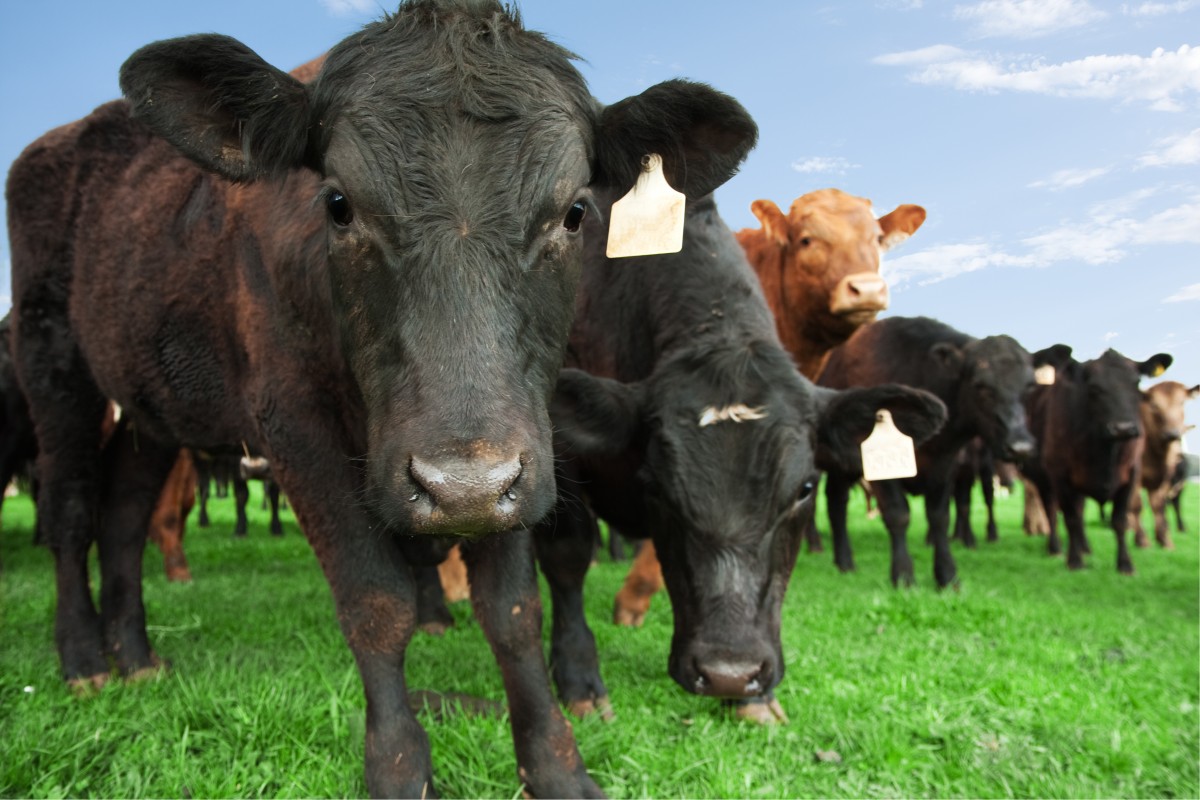Send your question to Umbra!
Q. I always buy organically raised beef, when I do buy beef. I read that ground beef you get is a mixture of beef from different animals. How do I know the beef I am getting is, in fact, organically grown? Could it be mixed with other feedlot beef? Also, when it comes to processing the animal, how are the organically raised cows treated? Any better or different than if they were just regular cows?
Suzy P.
Denver, CO
A. Dearest Suzy,
When I got your letter, I imagined you reading it aloud in with a suave accent: “I don’t always eat beef. But when I do, I prefer organic.” And well that you do: There are important differences between the lives — if not the deaths — of organically raised cattle and their conventional, feedlot-bound siblings.
Before we get into processing, let’s do a quick refresher on what “organic” really means when it comes to beef. The USDA defines organic livestock thusly: The animals eat 100 percent organic food (that means no GMOs), don’t receive antibiotics or growth hormones, have access to the outdoors, and their producers must meet animal welfare standards. More specifically, organic cows must be “raised in a way that accommodates their health and natural behavior,” which includes shade, shelter, space for exercise, fresh air, clean drinking water, and direct sunlight. And by law, 30 percent of their diet must be “dry matter” (read: grass — the food cows evolved to eat and the one they can most easily digest) from an organic pasture.
This stands in contrast to so-called “conventional” cows, which usually head to concentrated animal feeding operations (CAFOs) after a period of grazing. Much has been written [PDF] about the problems associated with this practice, but in sum: CAFO cows are crammed together in tight warehouses, chow down on grain, and are pumped full of antibiotics to combat the infections that run rampant in these conditions, all in the name of packing on as much meat as possible, as quickly as possible.
And now to your questions, Suzy. I don’t blame your squeamishness about making sure your organic beef doesn’t inadvertently contain meat from CAFOs. And good news: The USDA clearly regulates organic processing (a nicer word for slaughter) to ensure that your 100-percent organic chuck really does deserve the label. Certified organic processing plants must thoroughly clean their equipment [PDF] before working with organic cattle to prevent contamination (Uncle Sam even regulates which types of cleaners can be used) and store the finished product separately.
But while organic cattle enjoy a higher standard of living, there’s not much difference when it comes to their deaths. (Fair warning: If you’re craving a burger now, you might not be by the end of this column.) The Humane Methods of Slaughter Act decrees that the animal must first be stunned [PDF] — essentially, knocked out — with a blow to the head, gunshot, or other means before its throat is slit and it’s strung up to bleed out. (The process is a little different for livestock killed in accordance with Jewish or Muslim ritual, but it still must be humane.)
Animal welfare expert and Colorado State University professor Temple Grandin improved slaughterhouse practices even further with a system designed to minimize fear and stress in animals right before death. About half of all U.S. cattle are killed according to her guidelines today. However, not all plants abide by the letter of the law, and abuses do still happen.
If slaughter method is a major concern for you, your best bet may be turning to small, local ranchers who disclose just what happens behind the abattoir doors. (Bonus: These farms tend to raise their cattle humanely and out in the pasture, too.) Eat Wild’s pastured products directory is a good start, as is Local Harvest’s list.
But I would be remiss if I didn’t point out that the very best choice, environmentally speaking, is to cut way back on your beef. Humane or not, raising cattle is still highly resource intensive (check out how much land, water, feed, and fossil fuels go into a single burger).
In fact, it might be time to sink your teeth into an updated motto: “I very, very, very rarely eat ground beef. But when I do, I prefer only organic, pasture-raised, happy beef.”
Bovinely,
Umbra



